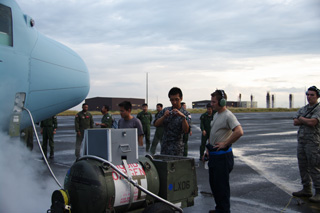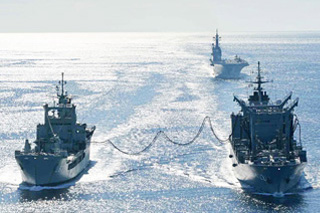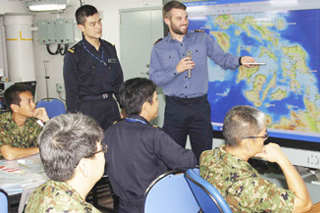International Disaster Relief Operations in the Philippines

Overview
From November 8 to 9, 2013, a large-scale typhoon No.30 directly hit the center of the Philippines. Following a request from the government of the Philippines, which was suffering catastrophic damage, to the government of Japan, and based on the consultation with the Minister of Foreign Affairs, the Minister of Defense decided to conduct international disaster relief operations in November.
On November 12, 2013, the MOD and SDF formed an international disaster relief team consisting of 50 personnel, including medical teams, and dispatched them to the Philippines one after another from that day on. After their arrival, the medical team provided medical treatment in Tacloban and Cebu. Considering the fact that the government of the Philippines sent further requests on November 14 and the disaster situation on the ground, the MOD and SDF decided to expand their operation on November 15. Following this decision, the Joint Operations Coordination Center was established in the Philippines, and the first ever Joint Task Force in international disaster relief operations was formulated to conduct disaster relief activities with about 1,100 personnel, the largest number in the past.
The Joint Operations Coordination Center in the Philippines closely coordinated with the Embassy of Japan and JICA That center also coordinated with the related Filipino organizations and other countries via a multinational coordination center in Manila. In addition, MSDF’s DDH ISE and UK HMS ILLUSTRIOUS exchanged liaison officers, engaged in close communication and coordination. Furthermore, based on the Japan-US and Japan-Australia Acquisition and Cross-Servicing Agreement (ACSA), supplies and services were provided and received between these countries for the first time in the international disaster relief operations. In particular, the U.S. Air Force provided liquid oxygen to the ASDF C-130H transport aircrafts, and the MSDF replenishment ship Towada conducted underway replenishment for an Australian vessel.
The Joint Task Force of the Philippines International Disaster Relief Team conducted the integrated operation; a total of 2,646 people received medical care; a total of 11,924 people were vaccinated; epidemic control operation was conducted in an approx. 95,600 square meters area; approx. 630 tons of supply was transported by air; and a total of approx. 2,768 afflicted people were transported by aircraft.
On December 13, 2013, the Minister of Defense issued an order to terminate disaster relief activities, based on the talks with the Philippine government. The month-long activities were completed accordingly.
The Japan-UK Defense Cooperation


















